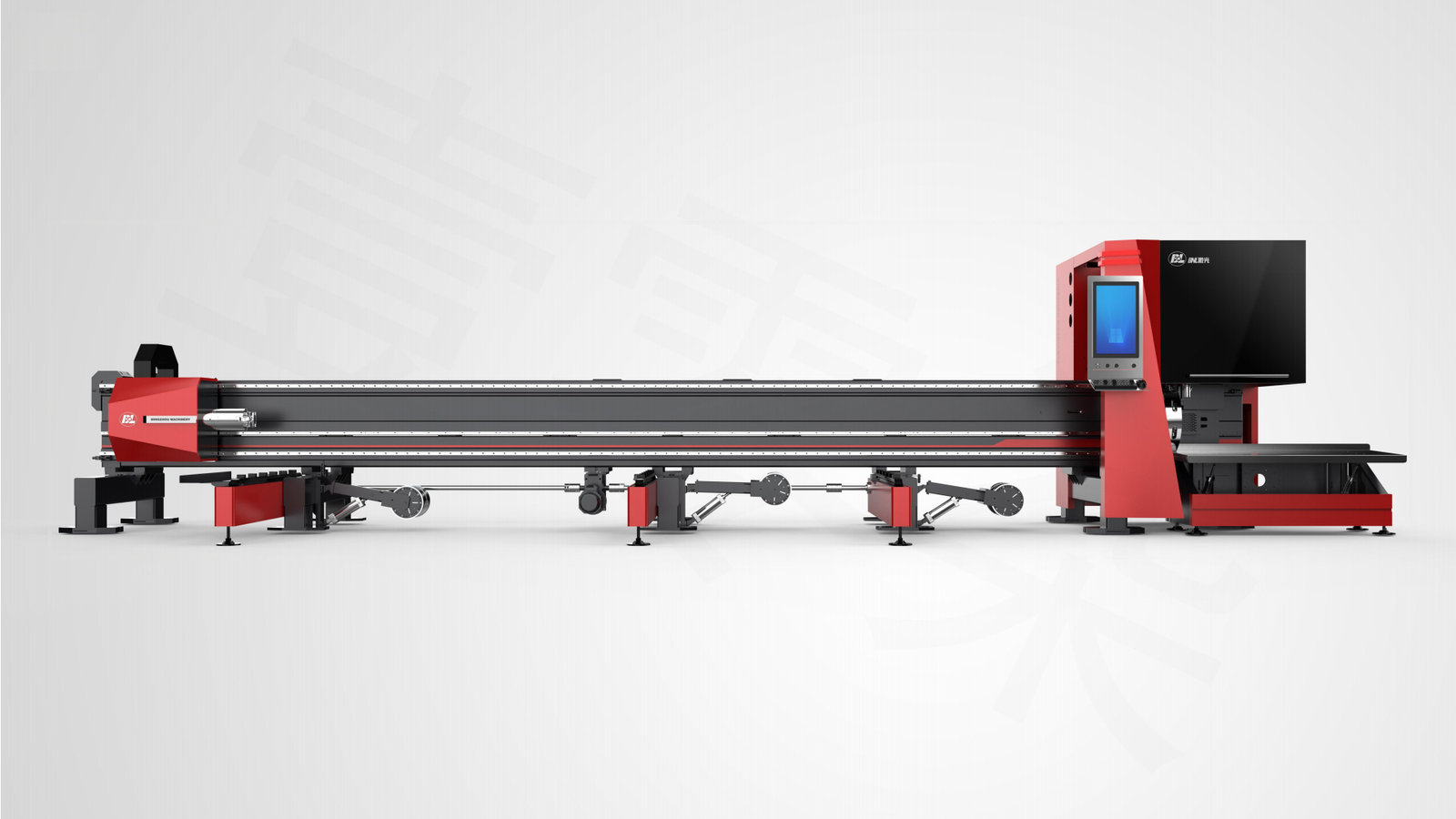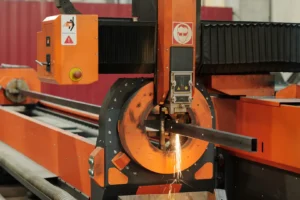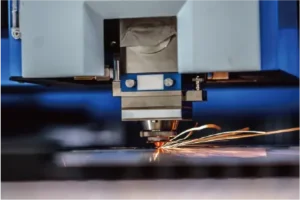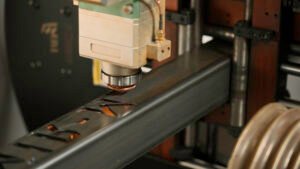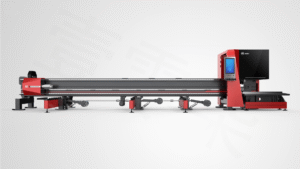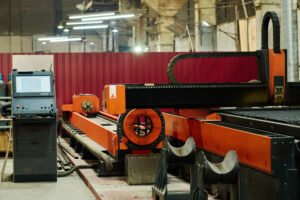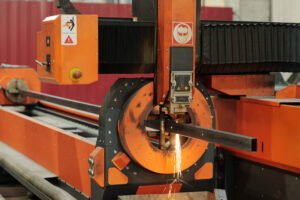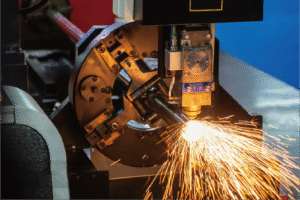Почему лазерный резак для резки металлических труб - это переломный момент в производстве
Struggling with slow, wasteful, and inaccurate traditional cutting methods? These outdated processes hurt your bottom line and limit your ability to compete in a fast-paced market.
A metal tube laser cutter is a game-changer because it combines high-speed precision, advanced automation, and incredible design flexibility. It drastically reduces manual labor, minimizes material waste, and enables complex cuts that were previously impossible, directly boosting productivity and profitability for any manufacturer.
 System High-tech laser cutting machine in modern industrial facility with control panel and automated feeding](https://mzbnl.com/wp-content/uploads/2025/08/advanced-laser-cutting-machine-system.webp)
I've spent my career in this industry, and I've seen firsthand how adopting the right technology can completely transform a business. A лазерный труборез isn't just another machine; it's a paradigm shift. It's the difference between merely surviving and actively leading your market. In the following sections, I'll break down exactly how this technology achieves such remarkable results and what it could mean for your operations.
What are the key features of a metal tube laser cutter?
Are you limited by the complex designs your current tools can't handle? Traditional methods are often slow and inaccurate. A laser cutter offers unparalleled precision and speed for any shape.
Key features include a high-power fiber laser for speed, a CNC system for automated control, and advanced chucks for stable tube handling. Modern machines also feature intelligent software for easy operation and multi-process integration, allowing cutting, punching, and marking in one seamless step.

When I talk to clients, from furniture makers to automotive parts producers, I always start by explaining that not all laser cutters are built the same. The real magic is in the integration of core components and intelligent innovations. Let's dive deeper into what makes these machines so powerful.
The Core Components
At its heart, the machine relies on a few critical elements working in perfect harmony:
- The Laser Source: This is the engine of the machine. Modern fiber lasers are highly efficient, reliable, and can cut through a wide range of materials and thicknesses with incredible speed. They require minimal maintenance compared to older CO2 lasers.
- The Cutting Head: This component focuses the laser beam with extreme precision. Advanced heads include auto-focus capabilities to adapt to slight material imperfections, ensuring a consistently clean and accurate cut every time.
- The CNC Controller: This is the brain. It translates digital designs into precise machine movements. A powerful and user-friendly controller is essential for minimizing setup time and reducing the chance of operator error.
The Intelligent Innovations
This is where we at MZBNL have focused our R&D. Standard features are important, but true competitive advantage comes from innovations that solve real-world production problems. Features like automated loading and unloading systems, intelligent nesting software to optimize material use, and integrated sensors for quality control are what separate a good machine from a great one. These features turn the cutter from a simple tool into the cornerstone of a smart, digitalized production line.
How does a metal tube laser cutter improve production efficiency?
Are production bottlenecks slowing you down? Manual processes are inefficient and labor-intensive. Laser automation streamlines your workflow, multiplying your output without adding staff.
It improves efficiency by automating the entire cutting process, from loading to unloading. High-speed cutting reduces cycle times, while integrated systems eliminate secondary operations. Innovations like our No-CAD system and Front-Feeding mechanism further slash setup times and operator workload, maximizing machine uptime.
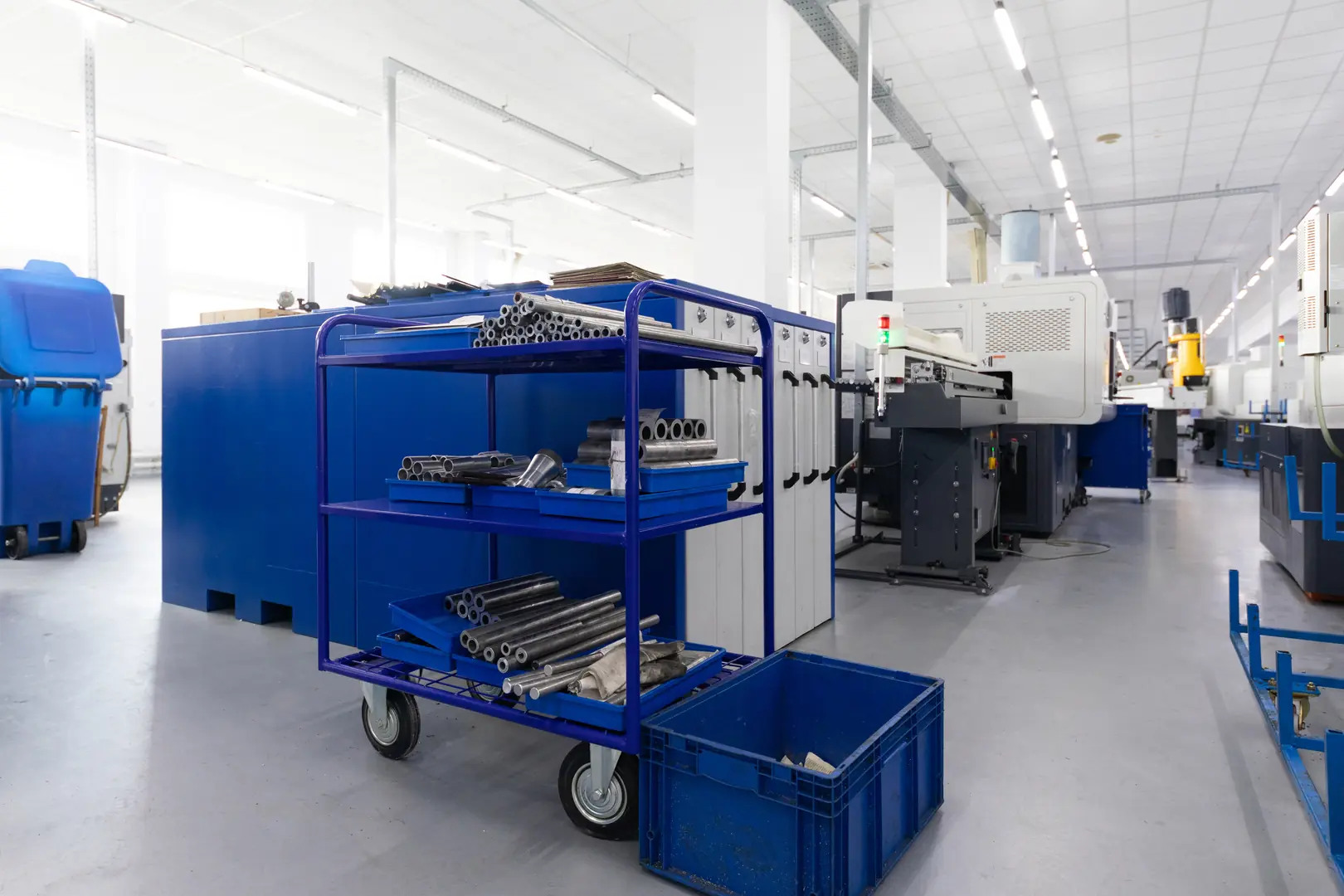
I remember visiting a client who was struggling to keep up with orders. Their workshop was filled with saws, drills, and grinders, each requiring a separate setup and operator. The whole process was slow and prone to error. After we installed one of our integrated machines, their workflow was revolutionized. The key to this transformation lies in tackling efficiency from multiple angles.
Smarter Operation, Not Harder Labor
One of the biggest hurdles in manufacturing today is the shortage of skilled labor. Finding and training someone to operate complex machinery can take weeks. That’s why we developed our pioneering Система No-CAD. Instead of needing a skilled engineer to create 3D drawings for every standard part, an operator can simply input parameters like length and hole position directly into the machine. This innovation reduces on-site training from a typical 15 days down to just one day. It creates a more agile workforce and gets your machine producing value almost immediately.
Optimizing the Flow of Material
Efficiency isn't just about cutting speed; it's about the entire process from raw material to finished part. Traditional side or rear-loading systems are often slow and physically demanding. Our Инновации на переднем крае is an automated front-loading system that directly addresses this. I've seen it increase feeding efficiency by around 40% while reducing operator labor intensity by a similar amount. This means less operator fatigue, fewer mistakes, and more consistent throughput, hour after hour.
What impact does a laser cutter have on material utilization?
Are high material costs eating away at your profits? Traditional cutting methods leave significant waste behind. Laser cutters optimize material use, turning scrap into revenue.
A laser cutter dramatically improves material utilization through precision cutting and smart nesting software. Our pioneering Zero-Waste Tail Material innovation completely eliminates tail-end waste by redesigning the cutting logic, ensuring every inch of the tube is used productively and directly boosting your bottom line.
![Передовой лазерный [режущий станок] (https://mzbnl.com/products/) Modern laser tube cutting machine in industrial setting with advanced automation features](https://mzbnl.com/wp-content/uploads/2025/08/advanced-laser-cutting-machine-3.webp)
For industries like medical equipment or architectural decoration, where expensive materials like stainless steel are common, material cost is a huge factor. For years, the "tail material"—the last bit of the tube that can't be fed past the rear chuck—was accepted as unavoidable waste. I never accepted that. It felt like leaving money on the factory floor. This is what drove us to develop one of our proudest innovations: the Безотходный материал хвостовой части system.
From Inevitable Waste to 100% Utilization
The concept is simple but the engineering is complex. By redesigning the machine's logic, we enable the front chuck to pull the tube all the way through the rear chuck. The machine then performs the final cuts on the segment held between the two chucks. This completely eliminates the 80-160mm of tail material that is typically discarded.
Let's look at the financial impact with a simple comparison:
| Характеристика | Traditional Cutting | MZBNL Zero-Waste Cutting |
|---|---|---|
| Хвостовые отходы на трубку | 80mm - 160mm | 0 мм |
| Использование материалов | ~95% - 98% | 100% |
| Financial Impact | Constant loss on every tube | Complete elimination of tail scrap |
For a company processing thousands of tubes a month, this translates into tens of thousands of dollars in direct material cost savings annually. It's a perfect example of how smart design can provide a massive and immediate return on investment.
How can businesses integrate laser cutters into their existing production processes?
Worried about disrupting your entire workflow? Integrating new technology can seem complex and risky. We design our machines for seamless integration and a fast ramp-up.
Businesses can integrate laser cutters by first analyzing their workflow to identify bottlenecks that can be solved with automation. Modern machines are designed for easy integration with existing CAD/CAM software. Our systems, with features like the No-CAD interface, simplify this process, requiring minimal retraining.
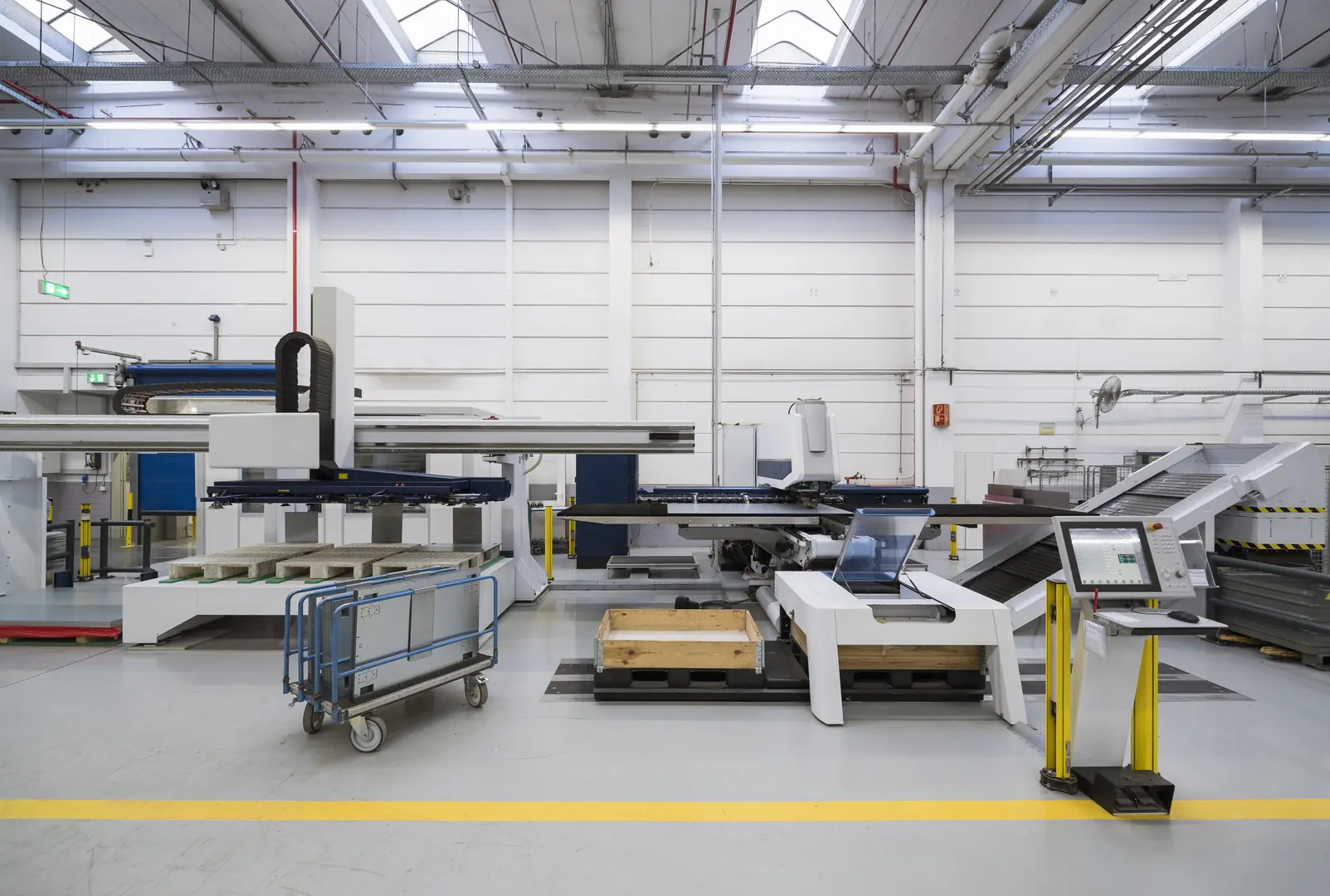
With over 4,000 clients worldwide, I've guided countless businesses through this process. The fear of a difficult transition is common, but it's almost always overestimated. A successful integration is about having a clear plan and a supportive partner. Here are the steps I always recommend to ensure a smooth and effective transition.
A Practical Four-Step Integration Plan
- Assess Your Current Workflow: Before you buy anything, map out your current process. Where are the delays? Where do errors occur? Which steps require the most manual labor? This analysis will highlight exactly where a laser cutter will deliver the biggest impact, whether it's replacing saws and drills or streamlining a complex assembly line.
- Select the Right Machine: Don't just buy a machine; invest in a solution. This means choosing a cutter with the right capabilities for your specific products and materials. This is where our focus on customized solutions comes in. We work with you to configure a machine that fits your needs perfectly.
- Plan the Physical Layout: Consider the flow of materials. Where will raw tubes be stored? How will finished parts be moved to the next station? Our Front-Feeding system, for example, often allows for a more compact and efficient layout than traditional side-loading machines.
- Focus on Training and Adoption: Technology is only as good as the people who use it. This is where our No-CAD system becomes a massive advantage. By simplifying operation, you empower more of your team to use the machine effectively, ensuring it never sits idle. A one-day training schedule means you start seeing returns almost immediately.
What are the recommendations for maximizing the benefits of a laser tube cutter?
You have the machine, but are you getting the most from it? Simply owning the technology isn't enough. A strategic approach is what unlocks its full, game-changing potential.
To maximize benefits, invest in ongoing operator training, implement a regular maintenance schedule, and leverage the machine's software for design optimization. Continuously explore new applications for the technology and partner with a supplier like us who provides ongoing support and innovative solutions.
 Technology Modern laser tube cutting machine in a bright factory setting with metal tubes](https://mzbnl.com/wp-content/uploads/2025/08/advanced-laser-tube-cutting-technology-1.webp)
Buying a laser tube cutter is the first step. Turning it into the most profitable asset in your facility is the next. Over the years, I've seen what separates the good operators from the great ones. It comes down to a commitment to continuous improvement and leveraging every feature the machine has to offer. Here are my top recommendations for getting the absolute most out of your investment.
Your Checklist for Maximum ROI
- Embrace the Software: Don't just use the machine to replicate what you did before, only faster. Use its intelligent software to do things you couldn't do before. Use nesting features to maximize material use on every job. Use the No-CAD system to quickly produce standard parts without tying up your design team.
- Prioritize Proactive Maintenance: A well-maintained machine is a productive machine. Simple daily checks and a regular preventive maintenance schedule will prevent costly downtime and ensure your cutter is always performing at its peak.
- Rethink Your Product Designs: This is a big one. Encourage your engineers to design для laser cutting. They can incorporate tab-and-slot designs for self-jigging parts, reducing assembly time. They can combine multiple simple parts into one complex, laser-cut component. This is where you unlock massive downstream savings.
- Partner for Long-Term Success: Your relationship with your machine supplier shouldn't end after installation. We see ourselves as partners in our clients' growth. With over 30 patents and a deep commitment to R&D, we are constantly developing new ways to make our machines—and by extension, your business—more productive and profitable.
Заключение
A metal tube laser cutter is not just an equipment upgrade; it's a fundamental business transformation. It boosts efficiency, eliminates material waste, simplifies operations, and empowers your workforce to innovate. This technology is the key to building a more resilient, profitable, and competitive manufacturing operation.
У вас есть вопросы или нужна дополнительная информация?
Свяжитесь с нами, чтобы получить индивидуальную помощь и квалифицированный совет.
